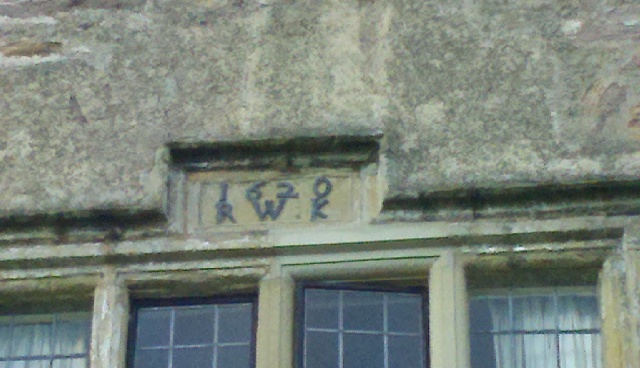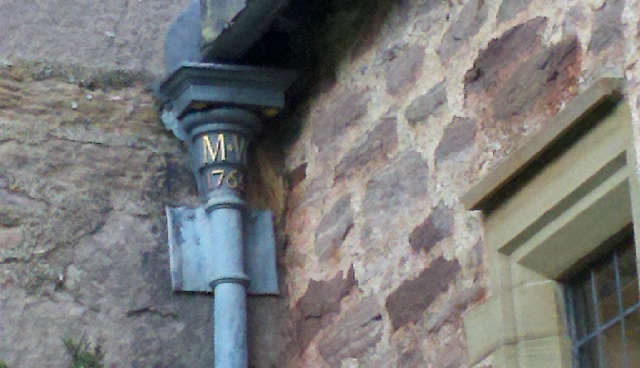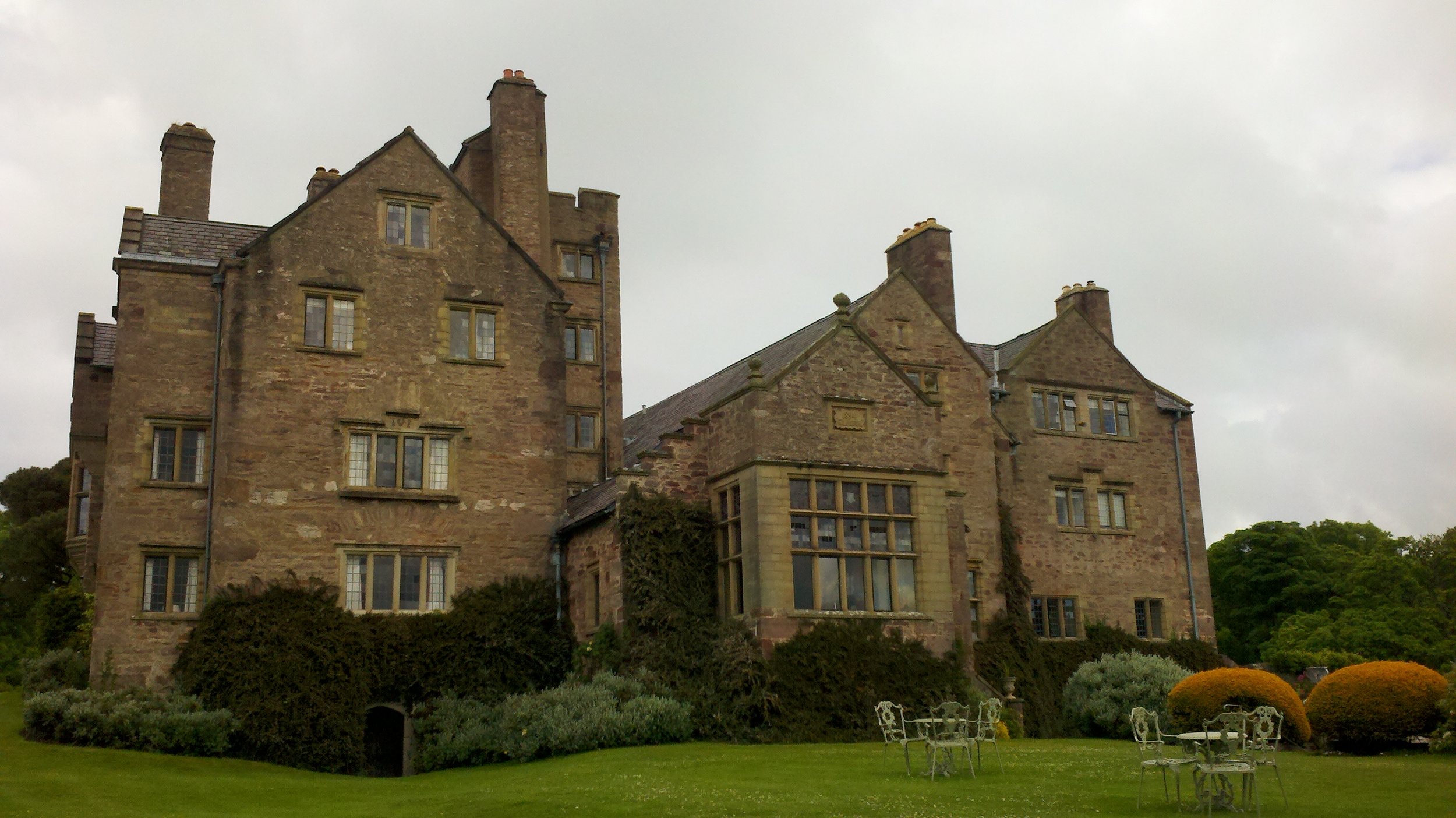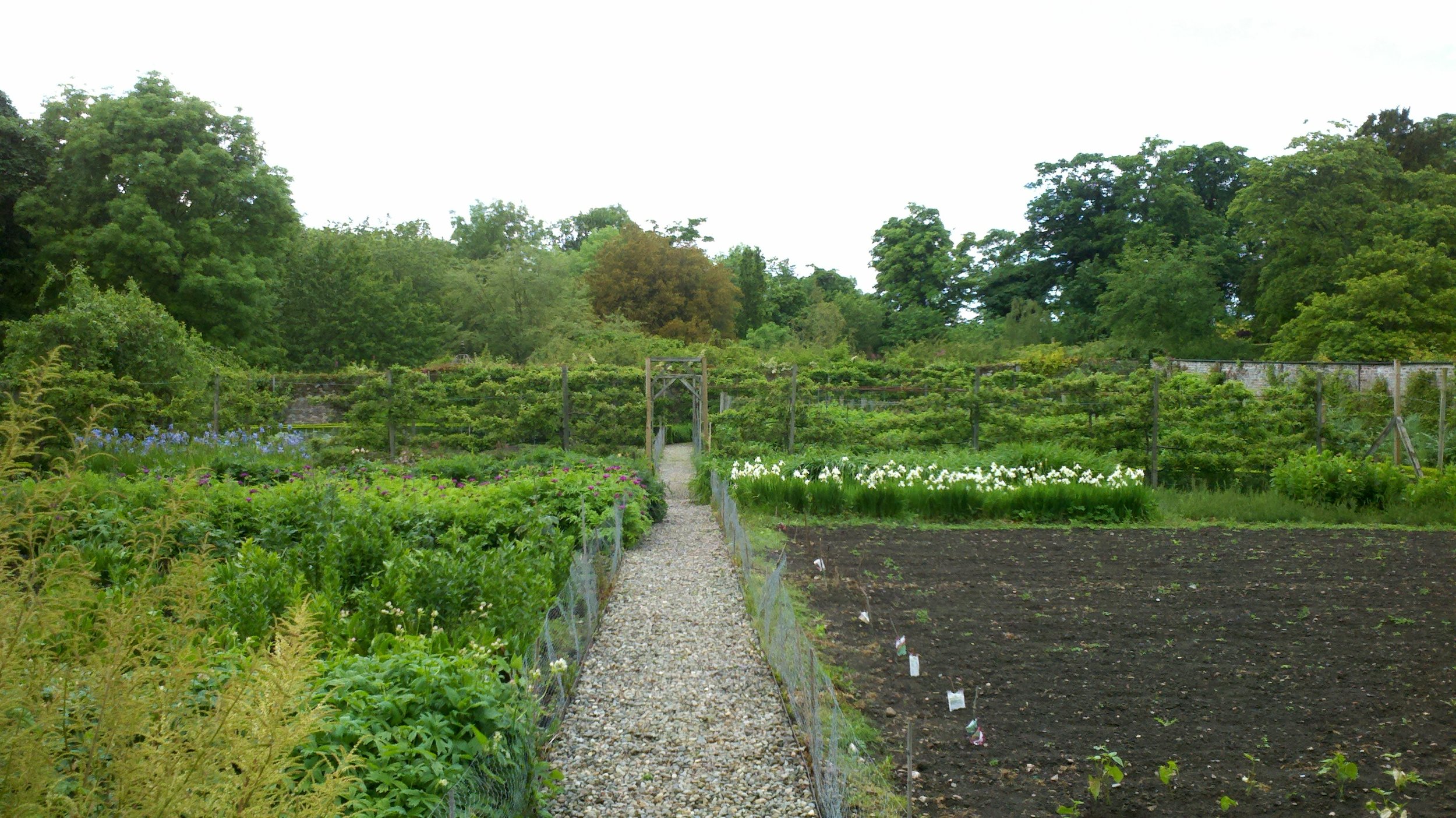 And how a 'marvel of Renaissance verse' describes precisely this, by Corey French. This article started out as a simple description of a country house that I visited on a recent trip to Britain. It is in North Wales and is called Bodysgallen Hall. I was introduced to the house by a friend who took me there for the very British event of afternoon tea. What a delight that was!
A number of things struck me about it. First was the harmony between house and grounds and the surrounding countryside. The gardens are more formally laid out close to the house, then they change into the less formal English cottage style and planting (a la Gertrude Jeckyll) and then into managed woods. Even the vegetable garden was arranged in an ordered and beautiful fashion, everything in its proper place. From the grounds we could see and sheep fells on the Welsh mountains in the distance, beyond the Conway valley.
And how a 'marvel of Renaissance verse' describes precisely this, by Corey French. This article started out as a simple description of a country house that I visited on a recent trip to Britain. It is in North Wales and is called Bodysgallen Hall. I was introduced to the house by a friend who took me there for the very British event of afternoon tea. What a delight that was!
A number of things struck me about it. First was the harmony between house and grounds and the surrounding countryside. The gardens are more formally laid out close to the house, then they change into the less formal English cottage style and planting (a la Gertrude Jeckyll) and then into managed woods. Even the vegetable garden was arranged in an ordered and beautiful fashion, everything in its proper place. From the grounds we could see and sheep fells on the Welsh mountains in the distance, beyond the Conway valley.
Second, is that every aspect of what we see is man made. There is no part that has not been shaped by the activity of man. This is not the untamed beauty of nature, but something even greater: nature conforming to a higher order. It has been raised up by the work of man.
Another aspect of note is the date in which the house was made. Or rather, dates. The various wings of the house were built over centuries ranging from the 17th to the 19th centuries. I could tell because each wing year of construction placed visibly on it. Despite this there is a unity to the whole because each part uses traditional proportions. These are the proportions that go back to the ancient Greeks and are derived from observation of the order and beauty of the cosmos. (There is one part that is an exception, it seems - the tall tower in the centre, which has even sized windows).
 I was just contemplating this when I received an email from Corey French, who is currently working on his doctorate in English Literature at the University of Virginia, with a focus on 17th century British poetry. He had attended the first summer retreat of the Way of Beauty Atelier this year. I mentioned to him that I am a literary philistine with little regard for poetry. Undaunted he told insisted that his specialist area would be of interest to me. This is because, he said, they often refer to the ideal of beauty and harmony that I had been talking about in my lectures. He told me that many even have and 'architecture' (ie structure) that incorporates he sacred number theory that I had mentioned. This piqued even my interest and I had asked him to send more information.
I was just contemplating this when I received an email from Corey French, who is currently working on his doctorate in English Literature at the University of Virginia, with a focus on 17th century British poetry. He had attended the first summer retreat of the Way of Beauty Atelier this year. I mentioned to him that I am a literary philistine with little regard for poetry. Undaunted he told insisted that his specialist area would be of interest to me. This is because, he said, they often refer to the ideal of beauty and harmony that I had been talking about in my lectures. He told me that many even have and 'architecture' (ie structure) that incorporates he sacred number theory that I had mentioned. This piqued even my interest and I had asked him to send more information.
Here is the first poem he sent me. It is called Penshurst and it is by Ben Jonson. There is a link to the poem itself here. It is the subject matter, rather than the form which is of interest here. It describes how the country house is a model of beauty. In his letter to me Corey describes how it reflects exactly the ideas I had been discussing of the liturgy of the Church as an ordering principle of cosmic beauty. You can see what he has written below in italics. Before that here is the closing stanza of the poem:
Now, Penshurst, they that will proportion thee
With other edifices, when they see
Those proud, ambitious heaps, and nothing else,
May say their lords have built, but thy lord dwells.
'The poem itself is a marvel of Renaissance verse and inaugurated a minor school of English poetry--the country house poem. (Although there were other country house poems before "Penshurst," such as Emelia Lanyer's "Description of Cooke-ham," Jonson's poem establishes the conventions of the trope through the seventeenth and early-eighteenth centuries.) In any event, the overall schematic of the poem traces a movement from the grounds around Penshurst Place (ranging from the copses of Gamage and Sidney to the Medway) into the manor-house itself, culminating in the middle of the poem with a depiction of a feast and then launching into an excursus on the hospitality of the Sidneys.
First of all, the poem begins with a meditation on the virtues of Penshurst Place as an edifice compared with the "prodigy houses" of more recent construction. As the poem presents it, Penshurst's architecture manifests an organic harmony that extends through time, pulling together through a unified tradition both its ancient and more modern aspects. In this way, the house becomes an emblem of the virtues which reside therein and which subsist in the Sidney family. The other houses, "built to envious show," are merely objects of conspicuous consumption, discordant in their architectural programs and intended only to display wealth. Penshurst's own harmoniousness extends to the natural world as well, and we find the entire natural order revolving around life in the manor house, even offering itself sua sponte for the enrichment of the manor's tables. As we travel around the grounds, the poem leads us through the natural topography of the place, yet it insists upon our simultaneously recognizing it as a moral topography. The concord of the land reflects the virtuous concord of its landholders.
 Then the poem takes us into the feast, and we find that it is the feast that resides at the heart of Penshurst, the energy which drives its entire harmony. Now, I'm absolutely convinced that Jonson intends this feast to be an image of the Eucharist. He spent several years as a recusant Catholic before reverting to Anglicanism, and I cannot help but think that he understood the intrinsic necessity of the liturgy. Indeed, what I see in this poem is precisely your concept of the liturgy as the ordering principle of the cosmos, as the source and summit of human life. The entire poem centers around this scene of feasting in which "all come in" and all are fed to satiety with "thy lord's own meat." I've written some on this poem, and to my surprise, no one has argued substantively for a reading of the poem as a profoundly liturgical and sacramental poem. Even Harp's article [see below], which raises and considers the Eucharistic elements of the poem does not, I think, unravel the full implications of this reading.
Then the poem takes us into the feast, and we find that it is the feast that resides at the heart of Penshurst, the energy which drives its entire harmony. Now, I'm absolutely convinced that Jonson intends this feast to be an image of the Eucharist. He spent several years as a recusant Catholic before reverting to Anglicanism, and I cannot help but think that he understood the intrinsic necessity of the liturgy. Indeed, what I see in this poem is precisely your concept of the liturgy as the ordering principle of the cosmos, as the source and summit of human life. The entire poem centers around this scene of feasting in which "all come in" and all are fed to satiety with "thy lord's own meat." I've written some on this poem, and to my surprise, no one has argued substantively for a reading of the poem as a profoundly liturgical and sacramental poem. Even Harp's article [see below], which raises and considers the Eucharistic elements of the poem does not, I think, unravel the full implications of this reading.
Additionally, the history of "Penshurst" criticism is a bit of a case study in the deformations of modernism. The reigning scholarly interpretation of the poem (though one that has met with its share of push-back in recent years) is the Marxist reading put forward by Raymond Williams and Don Wayne. They attack Jonson for colluding with the structures of power represented in the manor house and thereby using his poem to "write out" the inequalities of labor by depicting the land as offering itself up without human intervention and by suggesting that the life of the tenant farmer was little more than attending soirées at the manor. Immediately one realizes how truly malicious such an interpretation is; indeed, like most contemporary literary theory, it manages to base an entire interpretation of the poem on what isn't there rather than what is. Richard Harp produced a rather admirable essay in which he dismantles the Williams/Wayne approach entirely and points to the poem as a poem of festival. He suggests that Jonson hasn't "overlooked" labor to suit the ends of power but has chosen to write instead a type of Sabbath poem in which labor is given its reward of rest. The Williams/Wayne reading simply demonstrates the inevitable consequence of having recourse to no other worldview than one in which "labor" is the defining mark of human life and in which transcendence ceases to be possible.








